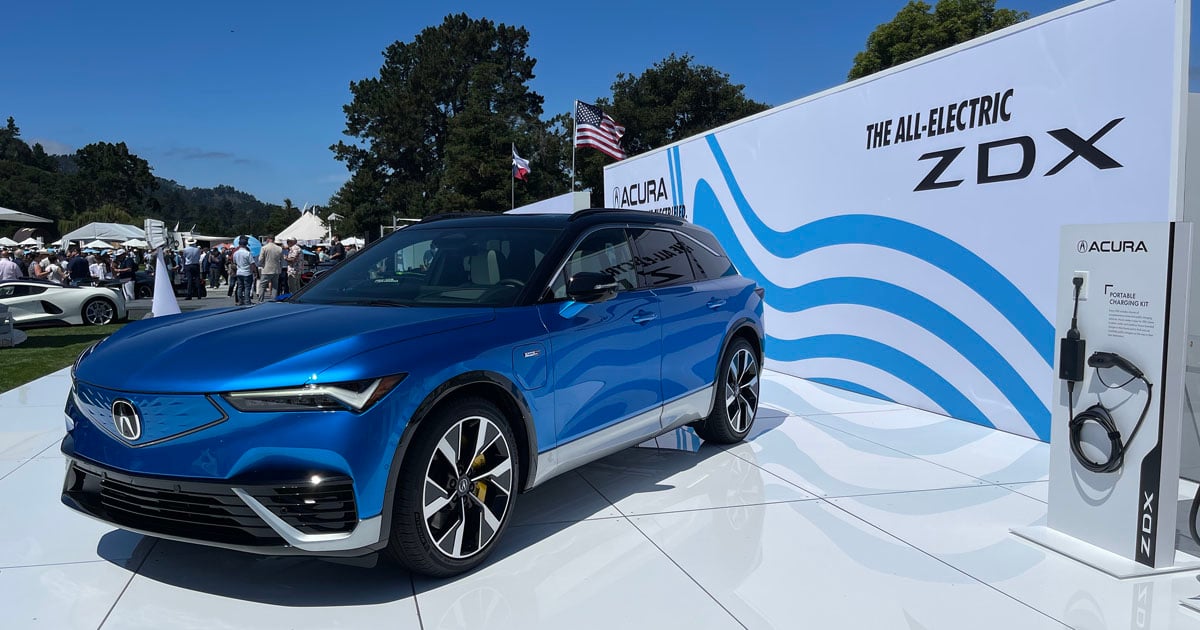
Honda Motor Co.’s new era of Honda and Acura electric vehicles will adopt Tesla’s North American Charging Standard connectors.
Honda and Acura’s upcoming electric vehicles, the ZDX and Prologue crossovers, are part of a co-development with General Motors. Both will be built in GM factories and use GM’s Ultium battery-electric platform.
GM has already said it will embrace the Tesla charging system.
“We really depend on GM, so once they [change], this will call for ZDX as well,” Shinji Aoyama, Honda Motor Co.’s executive vice president, told reporters at a briefing during Monterey Car Week where Acura revealed the 2024 ZDX.
GM plans to incorporate the NACS port on its EVs starting in 2025.
American Honda Motor Co. CEO Noriya Kaihara said timing for Acura and Honda-branded EVs will be 2025 or 2026.
Switching to NACS is an important step for the adoption of EVs, Kaihara said, especially in the U.S. where a more robust infrastructure and greater charger reliability are crucial for the success of electric vehicles.
Other markets have more established EV infrastructure.
“If you drive around Europe, it’s very easy,” said Jay Joseph, American Honda’s vice president of sustainability and business development. “There are apps that direct you to big or small charging stations, and there are certain corridors that are well supported. Like getting from Germany to Italy — it’s effortless.
“Their access to DC fast charging is comparable to access to gasoline, and that’s completely lacking in United States,” Joseph said, noting that consumers will not be able to “get over the hump” to buy an EV until they are confident they can get around.
“Anything that supports development of charging infrastructure to give people confidence is critical,” he said.
Tesla’s formula for infrastructure is winning fans.
“When you see a Tesla Supercharger network, you know what it is. You see it along the route and you have a little more confidence,” Joseph said.
But where Tesla’s network really excels, he said, is the maintenance.
“They’ve got somebody on-site monitoring the equipment, they’re monitoring it electronically and remotely, and they fix it fast.”
To ensure some of these pain points are addressed, Honda is banding together with six other global brands in a still-unnamed joint venture that plans to open 30,000 high-speed chargers in the U.S. and Canada. The chargers will offer a mix of Combined Charging System and NACS compatible ports, making the stations universal. The first ones are slated to open summer 2024 in the U.S.
The group said it thinks there will need to be about 200,000 fast chargers in the U.S. by 2030 to meet the demands of the EVs expected to be in the market.
That number is similar to the forecast in a study from the National Renewable Energy Laboratory in collaboration with the Energy Department’s Vehicle Technologies Office and the Joint Office of Energy and Transportation, which estimated that 182,000 fast-charging ports will be needed in the same time frame along highways and in local communities to support 33 million EVs.
Joseph said the automaker group believes the planned 30,000 will offer a “sizable piece” of what’s needed.
“When we look at where those locations will be,” he said, “we think we can make a visible and very big influence to change people’s perception of access to charging in a good way.”

